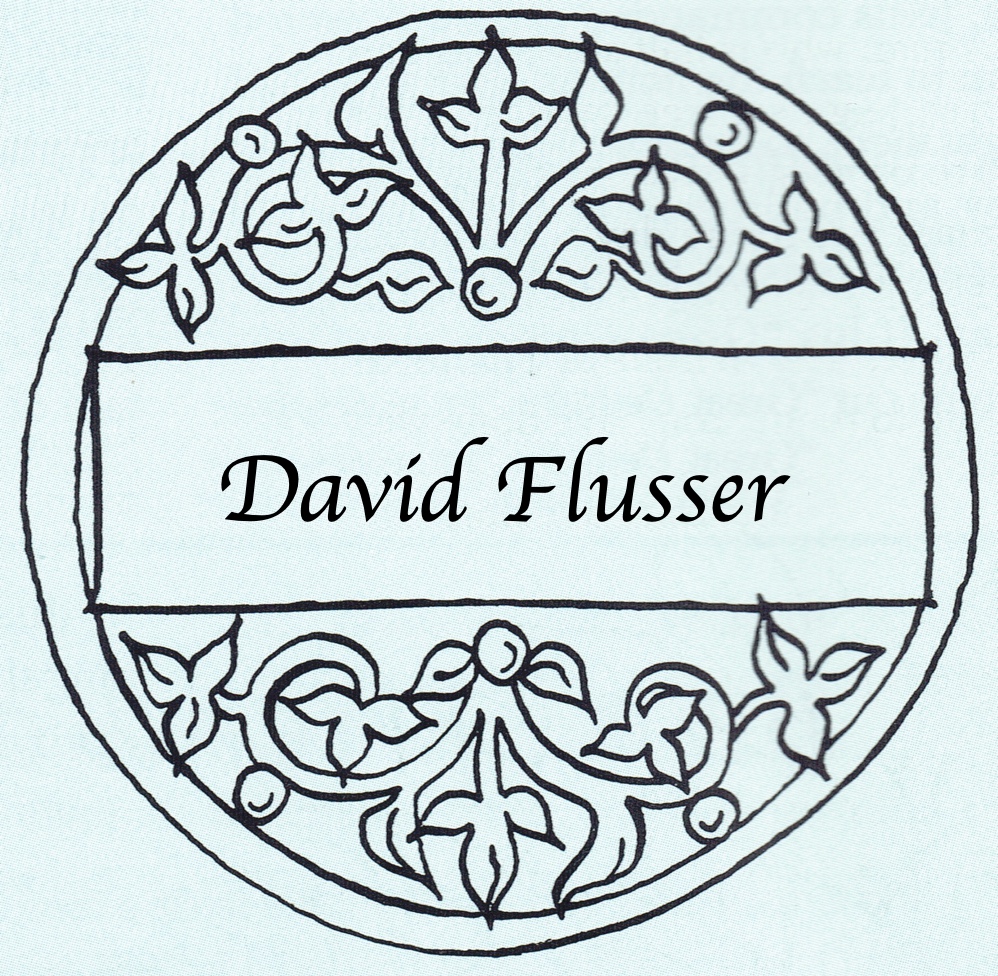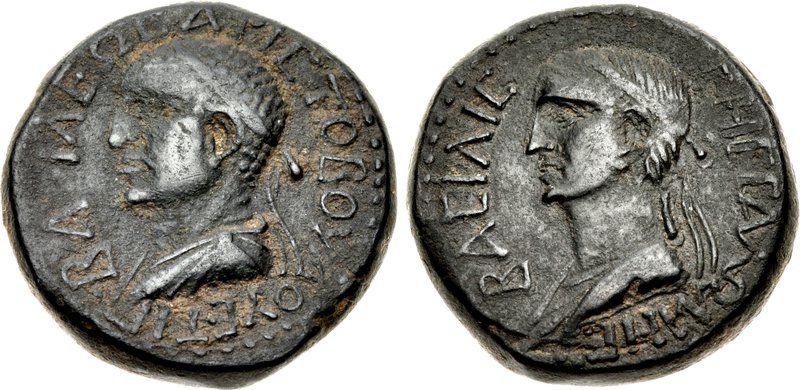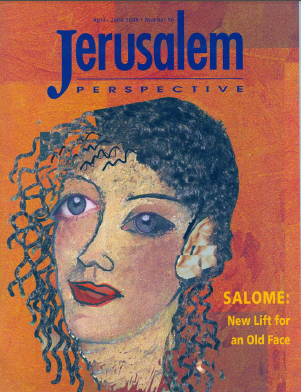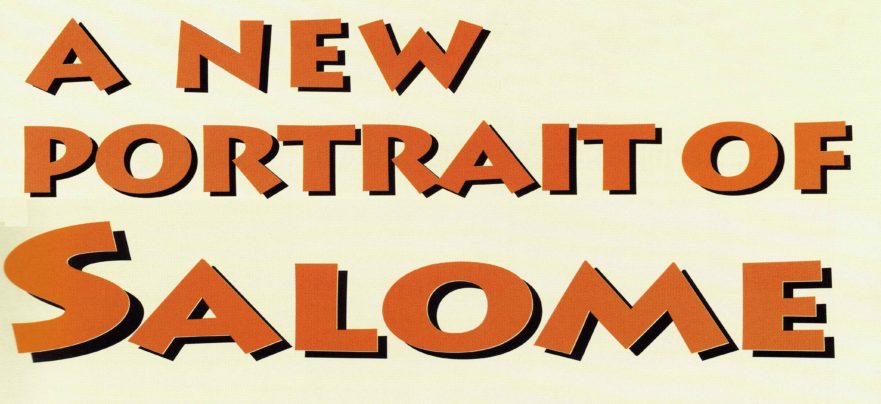
Salome’s image has been obscured and marred due to the personas created for her by writers of the past 150 years. Salome is famous for the part she played in the execution of John the Baptist. Since 1863, she has been depicted in books and films as morally depraved. Diligent research reveals, however, that the real Salome is much different than popular portrayals.
The paradoxes begin with the fact that her name does not appear in the Gospels. We know her name from Josephus’ account of the story (Ant. 18:136-137) and from the coin that bears her portrait—incidentally, hers is the only portrait of a person mentioned in the Gospels. Another paradox is the distortion of her story in modern literature and art.[14]

Premium Members and Friends of JP must be signed in to view this content.
If you are not a Premium Member or Friend, please consider registering. Prices start at $5/month if paid annually, with other options for monthly and quarterly and more: Sign Up For Premium

- [1] See David Flusser with R. Steven Notley, The Sage from Galilee: Rediscovering Jesus' Genius (Grand Rapids: Eerdmans, 2007), 18-19. ↩
- [2] Mark 6:17 and Matt. 14:3 read “Herod [Antipas]…Herodias, his brother Philip’s wife.” Herodias was the granddaughter of Herod the Great. Her first and second husbands were named Herod. The first was the son of Herod the Great and Mariamme, the daughter of Simon the high priest. The second, Herod Antipas, the half-brother of the first, was the son of Herod the Great and Malthace the Samaritan. Salome was the daughter of Herodias and Herodias’ first husband.
Salome’s first husband was Philip, the son of Herod the Great and Cleopatra of Jerusalem. Her second husband, Aristobulus, was the son of Herod, her mother’s brother (Ant. 18:136-137). It is probable that Mark confused Herodias’ first husband (Herod) with her son-in-law ([Herod] Philip). See Bruce M. Metzger, A Textual Commentary on the Greek New Testament, corrected edition (London and New York: United Bible Societies, 1975), 35. ↩
- [3] A similar statement appears in Matthew 21:26, which is parallel to Mark 11:32 and Luke 20:6. ↩
- [4] The report is surely enlarged by Mark himself. In Mark 6:23 he hinted at Esther 5:3, 6; 7:2. Mark’s is the only allusion to this Hebrew book, which was then much less widely circulated than is generally supposed (personal communication from Shmuel Safrai). ↩
- [5] One may assume that Herodias was not dining by Antipas’ side, but, as customary in oriental societies (cf. Esth. 1:9), was dining with the female guests in a private women’s hall. Thus, Salome had to leave Antipas’ presence to go to her mother for instructions. ↩
- [6] About the fortress of Machaerus, see Emil Schürer, The History of the Jewish People in the Age of Jesus Christ (ed. Geza Vermes, Fergus Millar and Matthew Black; Edinburgh: T. & T. Clark, 1973), 1:511 n. 135; and Michele Piccirillo, The Mosaics of Jordan (Amman, Jordan: American Center of Oriental Research, 1993), 245. ↩
- [7] For these fictionalized accounts, see the entry “Salome” in Encyclopaedia Judaica. ↩
- [8] Gutschmid (Kleine Schriften 2:318) calculated that Salome was born not later than 10 C.E., and her second husband, Aristobulus, about 14 C.E. Thus, she was nineteen years old in 29 C.E., and her portrait on the coin of 56-57 C.E. depicts her when she was about 46 years old (see Emil Schürer, The History of the Jewish People, 1:348-349 n. 28). ↩
- [9] According to Luke 3:1, it was in the fifteenth year of the Roman emperor Tiberius’ reign (28-29 C.E.) that John the Baptist appeared (see I. Howard Marshall, The Gospel of Luke: A Commentary on the Greek Text [NIGTC; Grand Rapids: Eerdmans, 1978], 133) and that Jesus’ ministry began following his baptism. It is likely that John was arrested by Herod Antipas soon after he started preaching. Salome was probably born around 17 C.E. and, thus, would have been about twelve years old at the time of John’s execution in 28-29 C.E. ↩
- [10] The author of Matthew says that Salome was “instructed [προβιβασθεῖσα, probibastheisa] by her mother” (Matt. 14:8). ↩
- [11] See Yaakov Meshorer, A Treasury of Jewish Coins: From the Persian Period to Bar-Kochba (Jerusalem: Yad Izhak Ben-Zvi Press, 1997), 92-93, 155-157, 208, 239-240 (Hebrew). See especially Cassius Dio, Historia Romana LX 8:2-3; for the text, see Greek and Latin Authors on Jews and Judaism (ed. Menahem Stern; Jerusalem: The Israel Academy of Sciences and Humanities, 1980), 2:367-368, No. 423. ↩
- [12] See Meshorer, A Treasury of Jewish Coins, 156, 330; Nikos Kokkinos, “Which Salome Did Aristobulus Marry?” Palestine Exploration Quarterly 118 (1986): 33. The portrayal on this coin of Aristobulus’ wife was an unusual event—it was uncommon for women to appear on coins. A portrait of Aristobulus appears on a coin from the year 70-71 C.E. without his wife’s portrait. ↩
- [13] See the entry “Paul” in The Oxford Dictionary of the Christian Church (London: Oxford University Press, 1997), 1235. ↩
- [14] See the entry “Salome” in Encyclopaedia Judaica (Jerusalem: Keter Publishing House, 1972), 14:689-691. ↩


![David Flusser [1917-2000]](https://www.jerusalemperspective.com/wp-content/uploads/userphoto/21.jpg)
